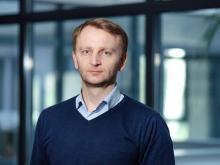SONATA BIS L. KURPASKA
Prof. Lukasz Kurpaska is a laureate of the SONATA BIS grant from NCN, titled Development of high entropy alloys with high radiation resistance and elevated mechanical properties at high temperatures - the HERRA Project
Abstract of the project: Due to their excellent high-temperature properties and good resistance to irradiation, High Entropy Alloys (HEA) are considered promising candidates for GenIV nuclear reactors. Furthermore, due to their excellent mechanical properties and corrosion resistance, these alloys are also regarded as applicable to high-temperature industries (chemistry, metallurgical, etc.). However, despite significant research worldwide, mechanisms responsible for their favourable properties are prone to debate and are still mainly produced on the laboratory scale. For this reason, the main scientific objective of this project is to manufacture a new type of HEA alloy, conduct experimental investigations, and explain the mechanisms responsible for their high radiation damage resistance. Different types of alloys with controlled amounts of chromium, nickel, iron, and manganese will be produced and tested (in conditions mimicking the environment of the nuclear power plant) to achieve this goal.
In the project, we propose to study chemical complexity impact by progression in compositional complexity. We plan to commence our research on elemental binary (NiFe) and ternary (NiFeCr) subsystems and finish it on (at least) quaternary alloys (NiFeCrMn). This approach offers a powerful experimental methodology to explore the influences of energy dissipation, defect production, and recombination. Understanding and optimizing the chemical complexity locally and globally will allow us to describe defects' structure and their interaction. Understanding this phenomenon may result in extending the material lifetime.
To manufacture novel HEA samples, selected elements will be sintered using the Arc Melting technique in a protective atmosphere, followed by annealing. Afterward, specimens will be tested in a pristine state and will be submitted to high-temperature irradiation. All the experimental tests will be carried out at NCBJ.
The project’s goal is to understand their functional properties (mechanical and structural) in situ at high temperatures. Advanced molecular simulations are expected to be performed, allowing us to describe the process of dislocation growth, migration, and interaction. This, combined with observed atomic microstructure and measured mechanical properties, will help us describe the plastic deformation process in the studied alloys (in pristine and irradiated states).







